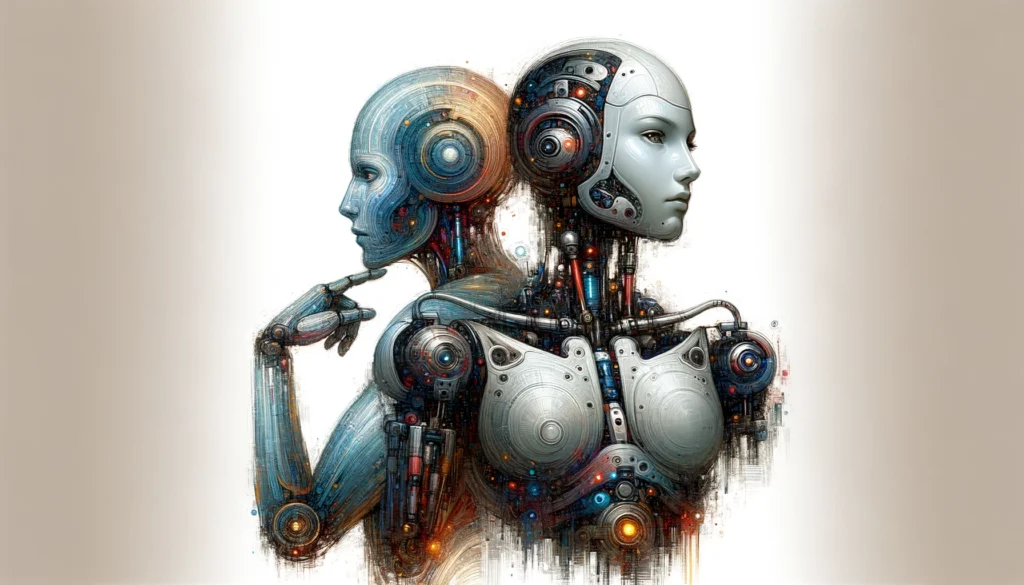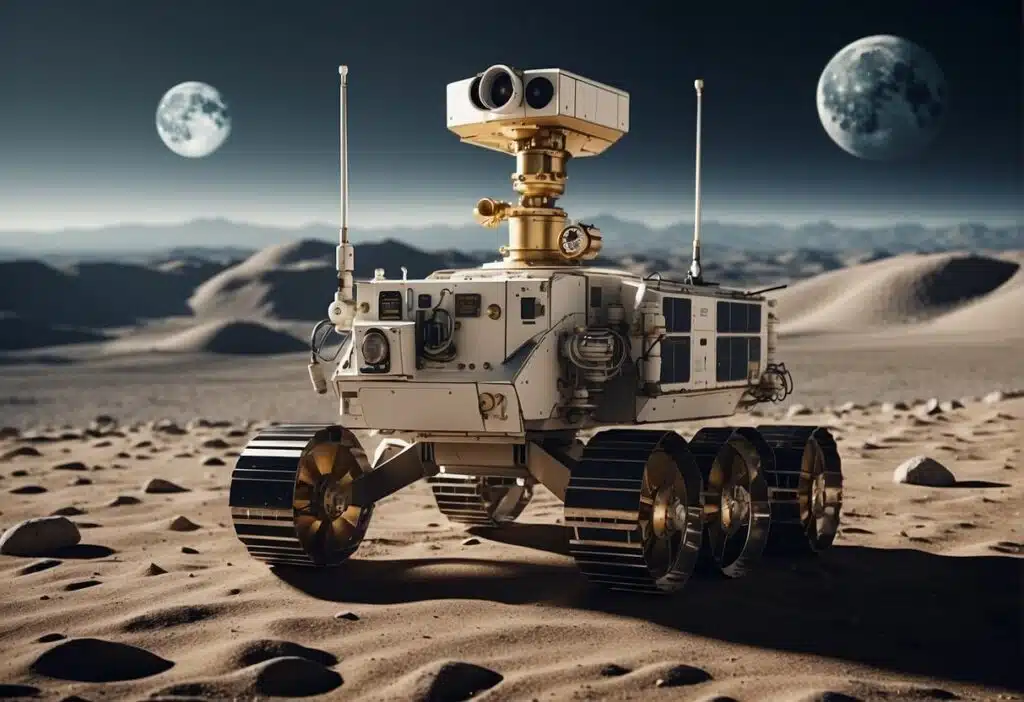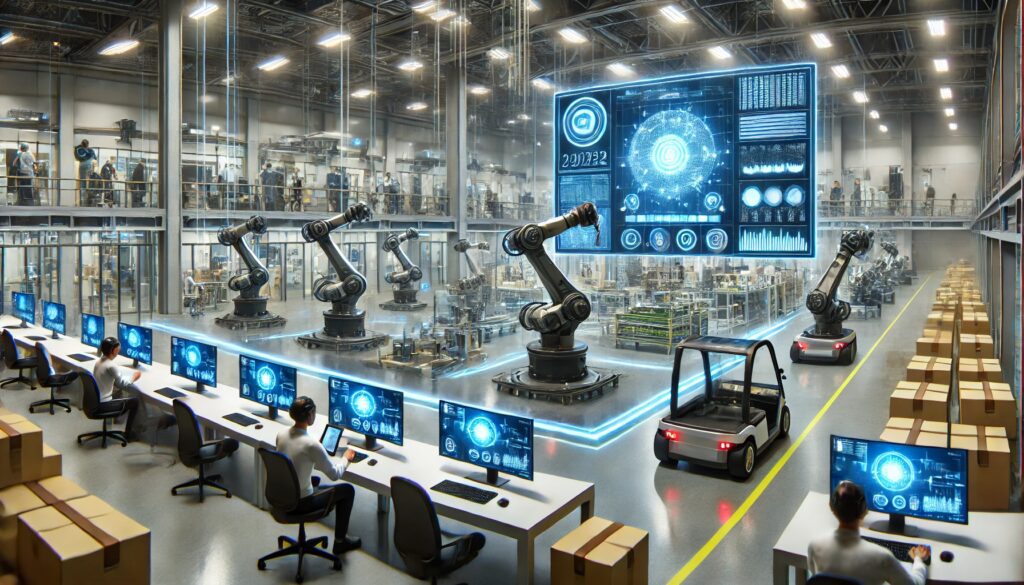The Dawn of AI Companions
We’re at the cusp of a new era where AI companions are transforming our approach to combating social isolation and enhancing our well-being.
These digital allies are making significant strides, particularly in healthcare and providing emotional support to older adults.
Bridging the Gap of Loneliness
We see a world where no one faces the ache of loneliness alone. Our AI companions are breaking down the walls of isolation, offering constant companionship and understanding.
Imagine a friend that’s there 24/7, ready to chat, listen, or just keep us company. It’s not just about having someone to talk to; it’s about feeling understood and valued.
AI companions are built with the sensitivity to tune into our emotions, sparking joy and fostering connections.
AI and Healthcare: A Caring Alliance
We’re placing the power of care into our hands, quite literally! AI companions in healthcare are not just futuristic concepts—they are real and providing support today.
With a mix of empathy and up-to-date medical knowledge, these intelligent systems offer reminders for medication, appointments, and assist in daily routines, especially for older adults.
They extend a helping hand, ensuring medical adherence and thus boosting patient outcomes.
Social Robotics: More Than Just Machines
We’re on the cusp of an incredible breakthrough. Social robots are paving the way for unprecedented levels of companionship, especially where emotional empathy and eldercare converge.
Building Emotional Bridges with AI
Imagine a world where feelings of loneliness dissipate as advanced AI ensures that social robots are more than mere machines. They’re becoming our empathetic companions, skilled in detecting and responding to our emotional cues.
Through engaging interactions, these digital friends are reshaping our concept of community and connectivity.
Eldercare and the Role of Social Robots
In our graying world, seniors often struggle with isolation, but social robots are stepping in as tireless healthcare providers.
With intuitive care and conversation, these intelligent machines assist our cherished elderly, offering them a sense of community and sustained emotional support.
Through empathetic dialogue and attentive companionship, social robots are revolutionizing senior care, becoming an integral part of our healthcare tapestry.
The Evolution of Interaction
In the realm of social robotics, human-robot interaction has reached thrilling new pinnacles, thanks primarily to groundbreaking advancements in natural language processing and emotional intelligence.
Natural Language Processing: The Heart of Conversation
Natural language processing (NLP) propels our ability to forge deep connections with AI companions.
We’ve seen robots transform from simple, scripted machines into entities capable of understanding and participating in complex dialogues.
Our AI companions now grasp nuances, detect subtleties in language, and provide personalized interactions that were a mere dream just a decade ago.
Understanding and Expressing Emotions
AI’s capacity to discern and exhibit emotions has launched us into an era of unprecedentedly intuitive companionship.
As we integrate robots into our daily lives, their ability to read and mirror our facial expressions becomes crucial.
We’ve developed algorithms that allow robots to recognize happiness, sorrow, and even subtle hints of frustration or confusion, fostering a more empathetic bond between humans and machines.
Ethics and Privacy in Social Robotics
We’re on the brink of a thrilling era where social robots have the potential to offer revolutionary companionship! But with great power comes great responsibility.
As we embrace these new members into our daily lives, we must prioritize ethical considerations and privacy protection.
Firstly, it’s crucial that we ensure these robots respect our personal boundaries. Privacy safeguards must be iron-tight to protect our intimate moments from unauthorized data breaches.
We’re not just talking about hacks; even well-intentioned features need strict oversight. After all, our secrets should never become cocktail chatter for machines.
Moreover, we’re advocating for robust ethical frameworks. Our goal? To prevent dependency and encourage autonomy, because we believe in empowerment, not substitution.
Robot companions should enhance, not eclipse, human relationships. They should be there to offer support, not to take the helm of our lives completely.
Reflecting on the growing role of AIs in fostering social connectedness, it is imperative that we craft these connections with a conscience.
By embedding privacy first and adhering to the highest ethical standards, we’re setting the stage for not just smarter, but also safer, social interactions with our robotic friends.
We’re steering clear of the slippery slopes of dependency. Instead, we’re fostering a balance where our robotic allies respect our autonomy and amplify our well-being.
Together, we’re reshaping the landscape of companionship, ensuring a future that’s not only connected but also conscientiously secure.
The Future is Here: Revolutionizing Companionship with AI
We’re witnessing a transformative era where robotics melds perfectly with artificial intelligence to enhance human interactions and quality of life, particularly for our aging population facing the challenges of cognitive decline.
From Fiction to Reality: The Rise of Companion Robots
Gone are the days when companion robots belonged to the realm of science fiction. Today, we’re welcoming these remarkable innovations into our homes, where they promise more than mere novelty.
AI-driven companions are redefining the way we interact, providing not just entertainment, but also intelligent conversation and support. Indeed, artificial intelligence, coupled with advanced robotics technology, has birthed a new generation of companions that learn from and grow with us.
Changing Lives, One Robot at a Time
The impact of AI companions on our lives is profound. Many of us see these robots as more than just gadgets. They’re lifelines that provide companionship and help combat the isolation that can accompany aging.
Interactive AI companions are addressing cognitive decline. This is a pressing concern for an increasing number of families. These robots stimulate mental engagement and help combat isolation.
Our appreciation for these systems is skyrocketing. They actively enhance the day-to-day quality of life for individuals across the globe. With each upgrade and iteration, they’re becoming more empathetic, personable, and indispensable.
Social Robotics is a rapidly evolving field, and some of the hottest trends include:
- Educational Applications: Social robots are increasingly being used in educational settings, providing personalized learning experiences and supporting teachers in classrooms.
- Emotional Intelligence: Advancements in AI have enabled social robots to better understand and respond to human emotions, making interactions more natural.
Latest advancements
- AI Products for Kids: There’s a discussion on the implications of AI-driven products for children, which promise companionship and learning opportunities. Experts urge caution and consideration of the technology’s appropriateness in children’s lives.
- AI Economy and Employment: An AI developer, Andrew Mayne, suggests that AI technology could lead to zero percent unemployment by creating more jobs and spurring unprecedented economic growth.
- Robotics in Daily Life: The revolutionary impact of robotics, fueled by technological advancements, is highlighted, emphasizing the transformative effects they have on our daily activities.
- Nvidia’s Humanoid Robots: Nvidia has announced Project GR00T, aiming to create embodied human-level AI in robot form. This project seeks to develop general-purpose foundation models for humanoid robots.
- AI Model for Task Learning: An OpenAI spinoff, Covariant, has developed an AI model that helps robots learn tasks in a human-like manner. This model, RFM-1, combines reasoning skills with physical dexterity.
- Robots at the UN Summit: At the AI for Good Global Summit, robots like Ameca, Grace, and Sophia were showcased, demonstrating the potential of AI-driven social robots to contribute positively to society.
- Human-Robot Collaboration: Inspired by human-human collaboration, new techniques are being developed for robots to work alongside humans, improving shared tasks and interactions.
- Brain-Computer Interfaces: These interfaces are being used to enhance communication between humans and robots, particularly in rehabilitation and emotion recognition.
- Emotional Intelligence: Robots are being equipped with the ability to understand and respond to human emotions through facial expressions, body gestures, and eye-tracking.
- 5G and IoT: The rollout of 5G and the Internet of Things is expected to significantly improve the connectivity and functionality of social robots.
- AI Techniques: Advanced AI techniques, including machine learning and Node.js, are being utilized to create robots that can understand and adapt to human emotions.
These developments show a growing trend in the integration of AI into social contexts, with a focus on creating robots that can interact more naturally with humans and perform a variety of tasks autonomously.
FAQ’s
- What are AI-driven social robots? AI-driven social robots are advanced autonomous systems designed to interact with humans, providing companionship, emotional support, and assistance. They use artificial intelligence to understand and respond to human communication, interpret facial expressions, and adapt to social cues.
- How do social robots enhance human interaction? Social robots can engage in conversations, remember past interactions, and use psychological techniques to motivate behavior change. They can provide companionship directly or by connecting users to others, thus reducing loneliness and increasing well-being.
- Can social robots truly provide companionship? Yes, studies have shown that both pet-like and humanoid companion robots can decrease loneliness and provide companionship. They can engage users in activities, offer reminders for social appointments, and even help older people remain active in their homes.
- What are the potential benefits of social robots? The potential benefits include reduced stress and loneliness, increased engagement and interaction, and improved mental stimulation. They can also support health by motivating adherence to treatment for chronic illnesses.
- Are there any ethical considerations with social robots? Yes, the development of companion robots with AI requires ethical frameworks to address issues such as privacy, autonomy, and the nature of human-robot relationships. It’s important to consider the potential impacts on societal health and individual well-being.
- What is the future of social robots? The future of social robots looks promising, with advancements in AI-driven emotional intelligence and natural language processing. They are expected to become more personalized, understanding, and capable of adapting to individual needs, especially for those dealing with loneliness or mental health issues.








